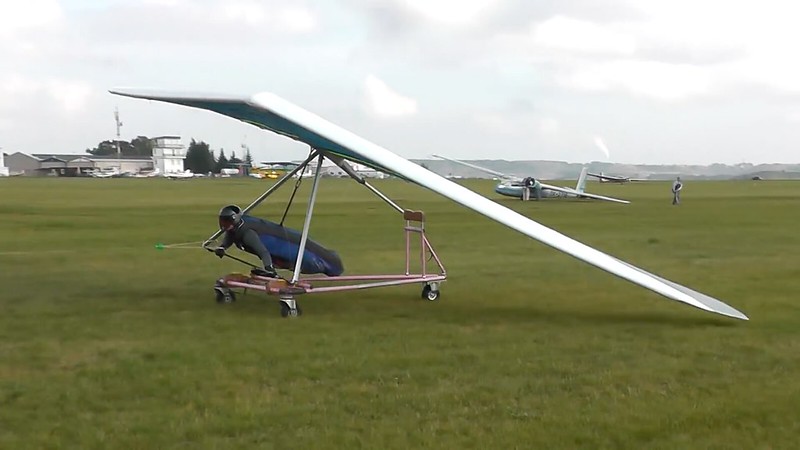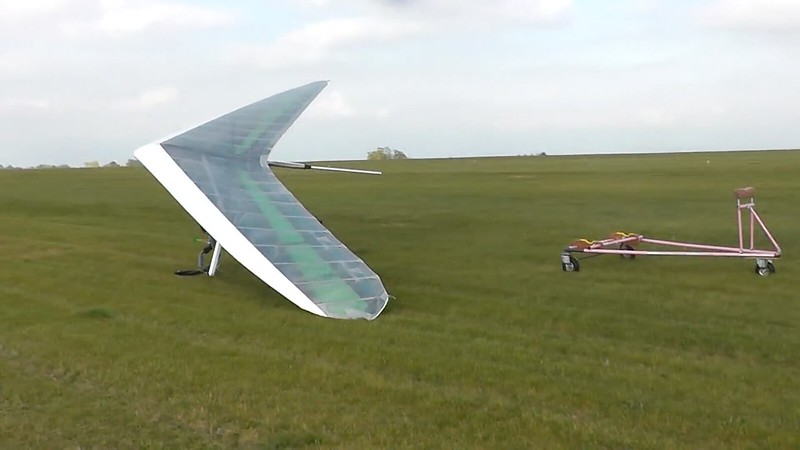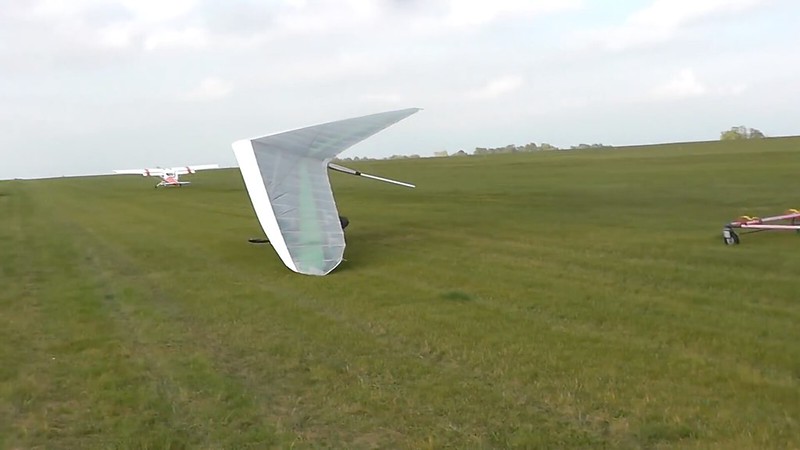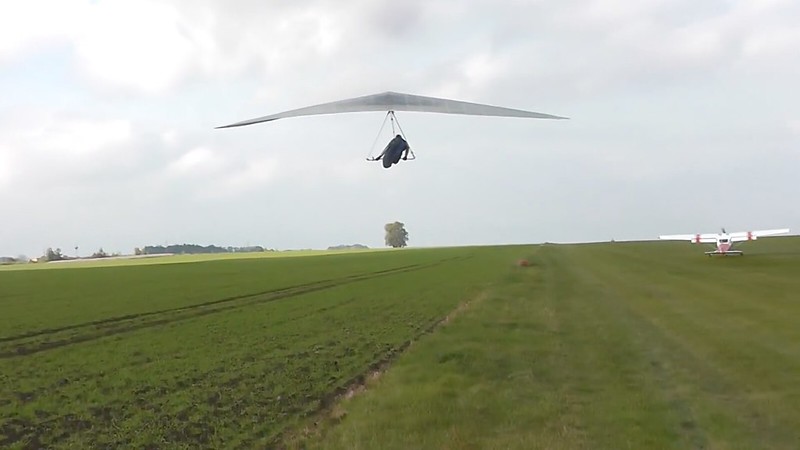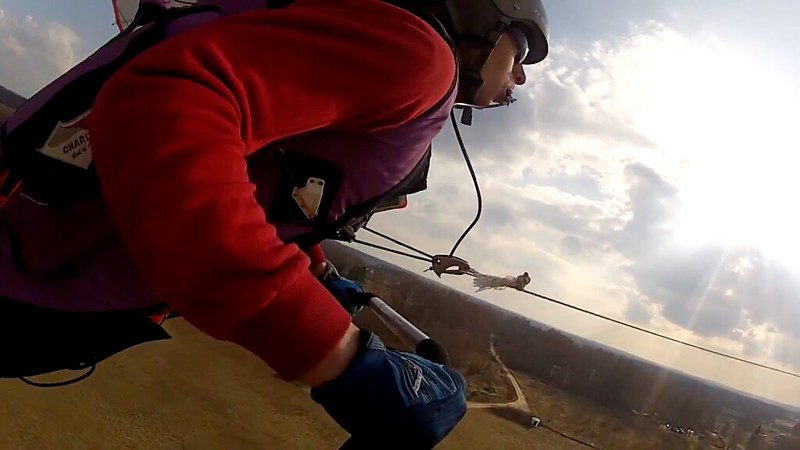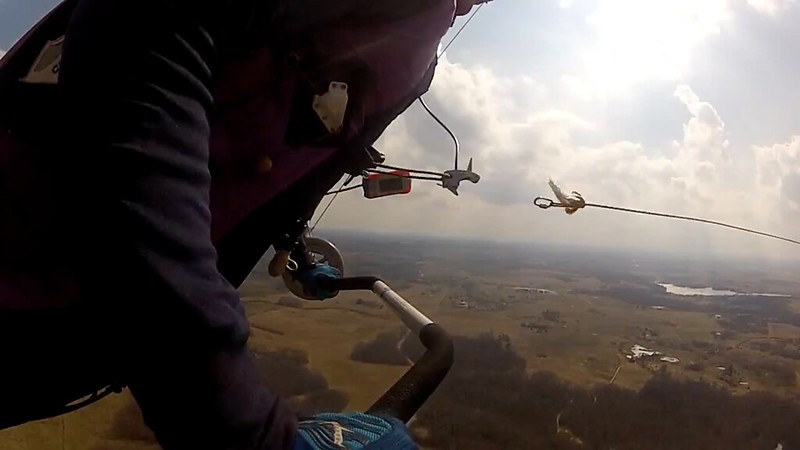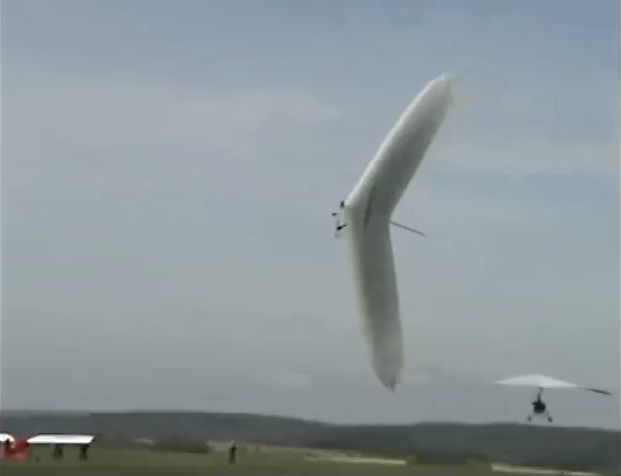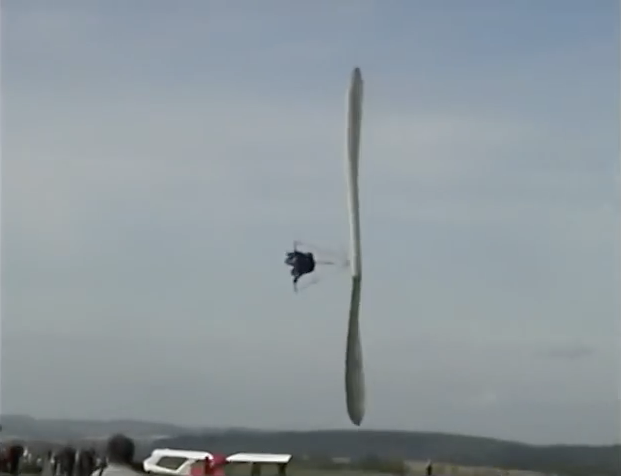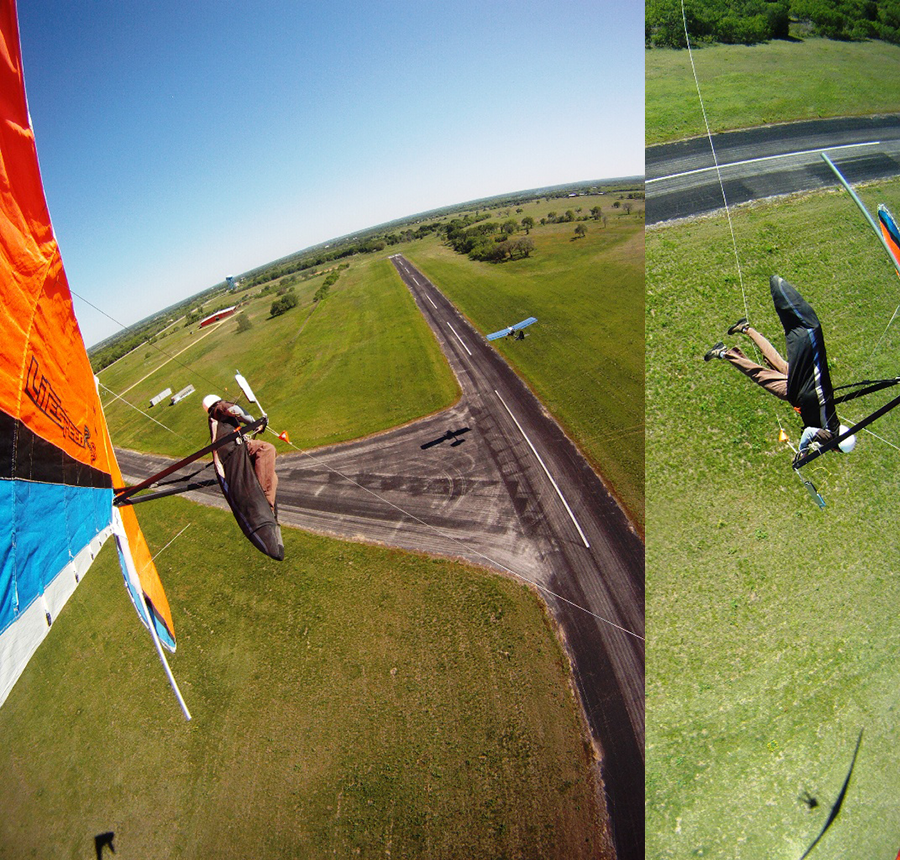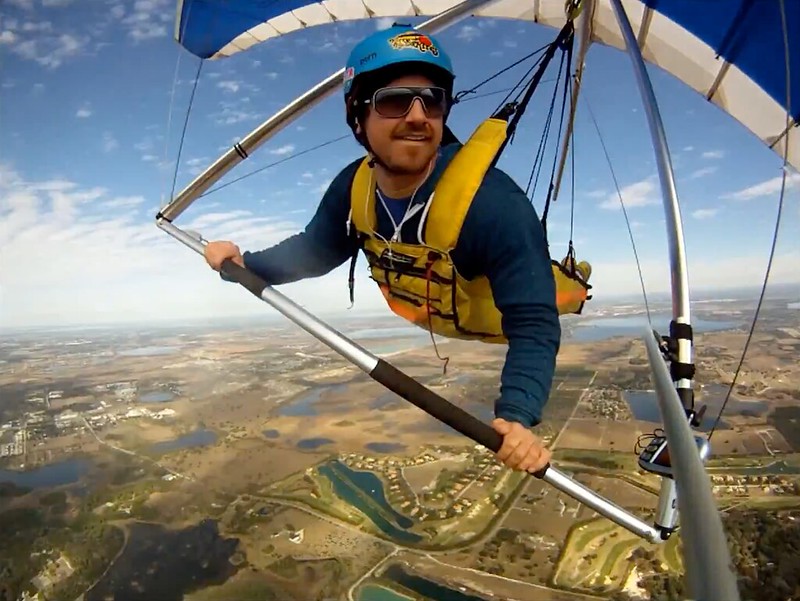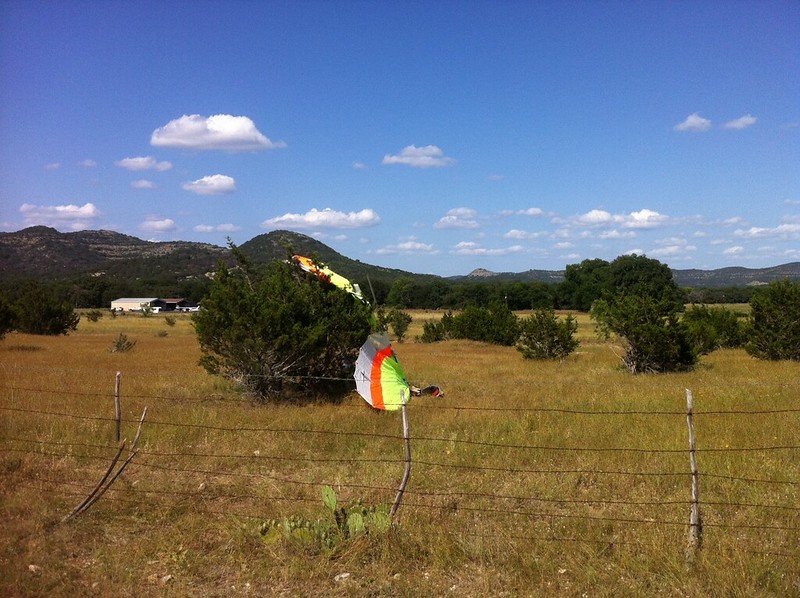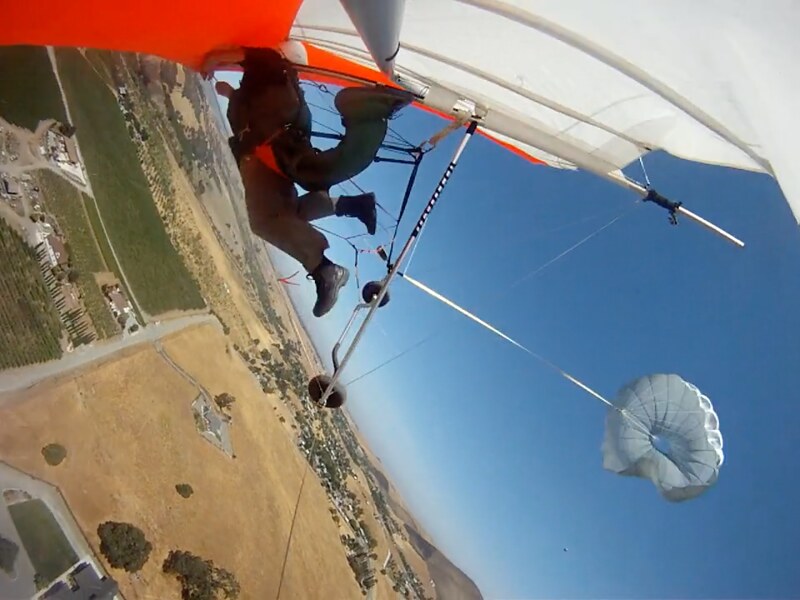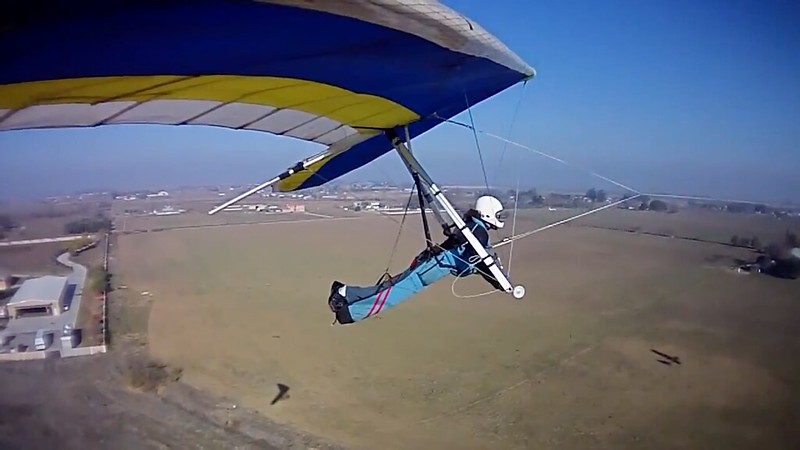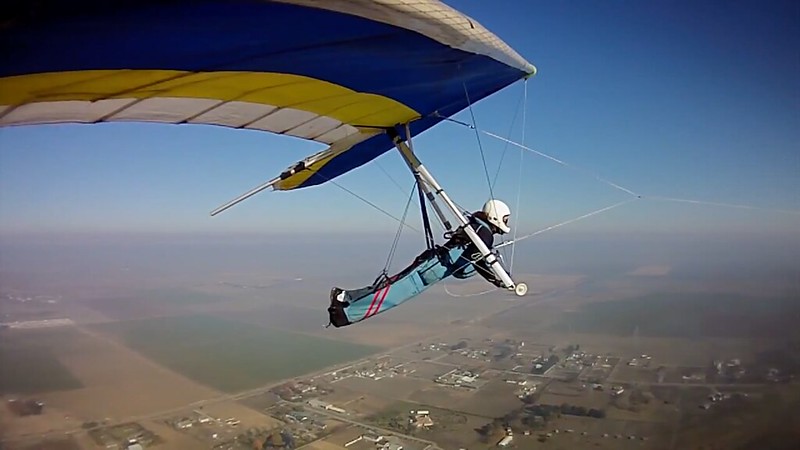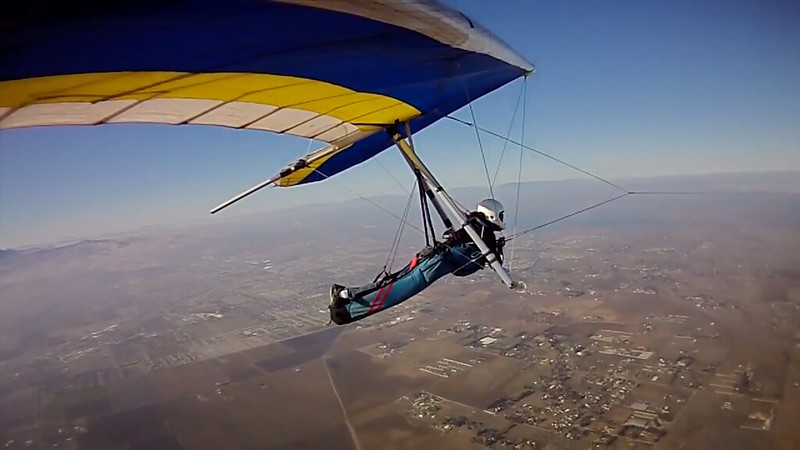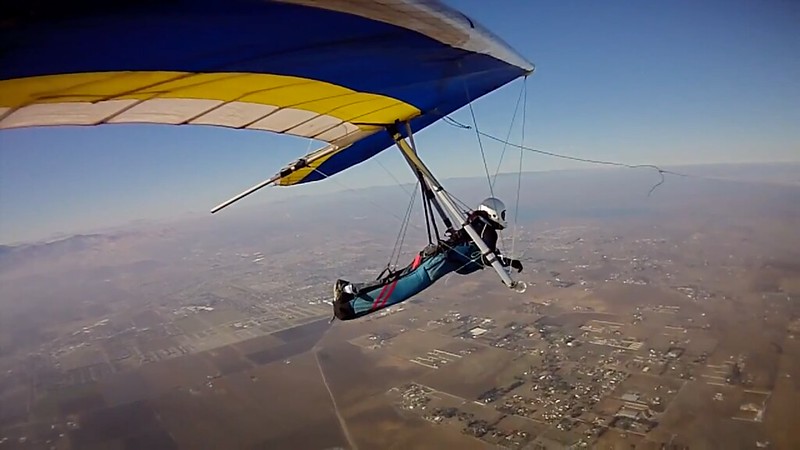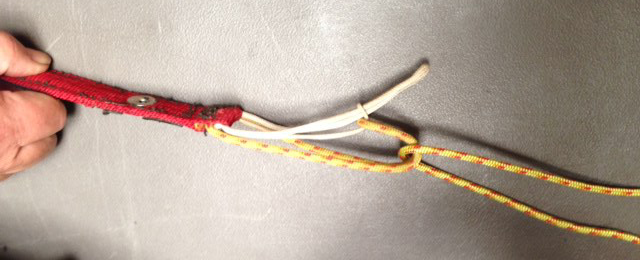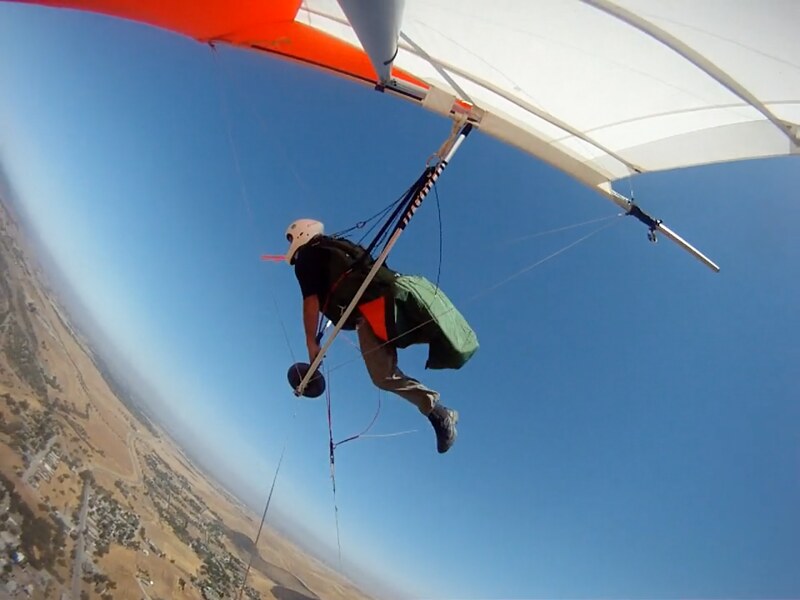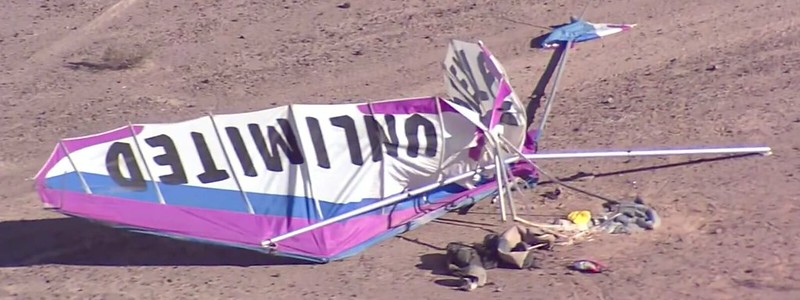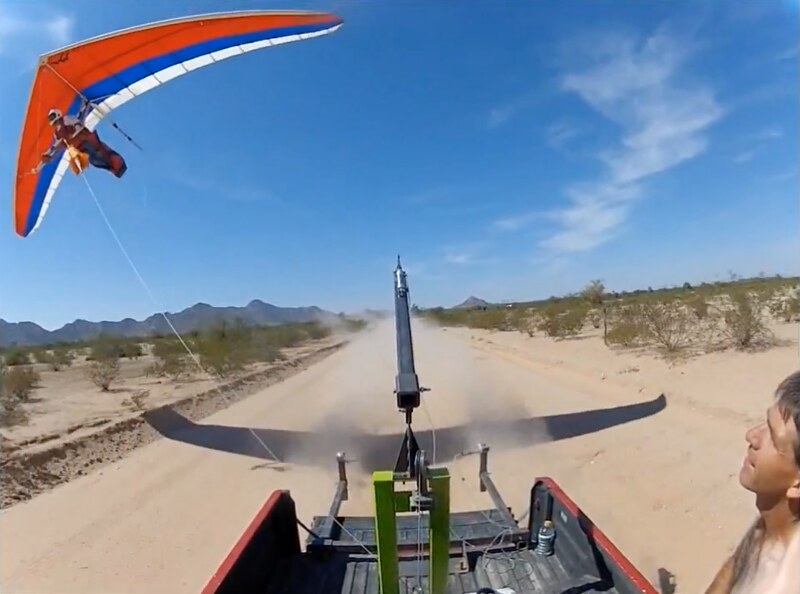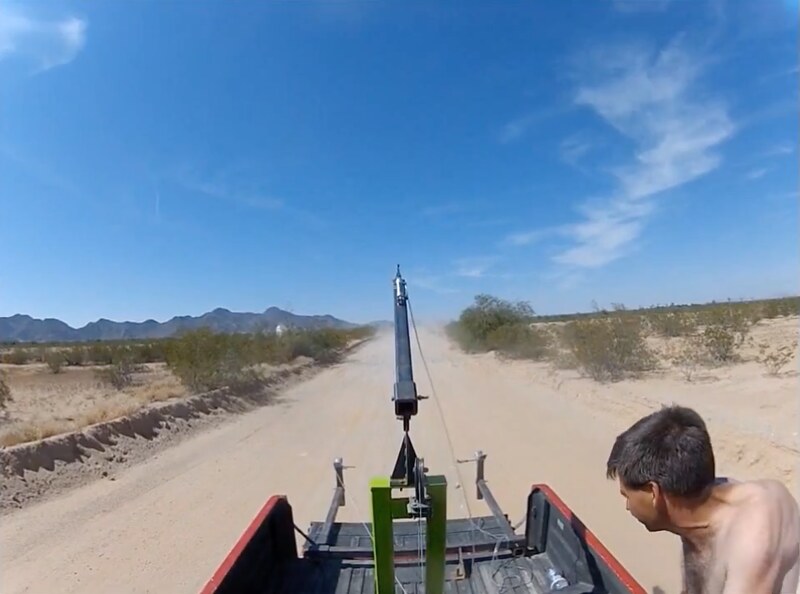http://content.foto.my.mail.ru/mail/birukobu/186/h-192.jpg

I had trouble understanding it at first because the 1024 width images as displayed in the Personal Messages window had a lot of right side chopped off and my brain was too fried at the time to think to open them in new windows and see what was going on. I've loaded them all into Flickr so I can display them in 800 width here.
So the carabiner is clipped to the tow ring (quick link) and the barrel release is routed over the basetube and the long green line is routed through vinyl tubing and under the basetube.
The Stage One / barrel release engages the approximately eighth inch leechline loop - which functions as the primary tow ring during the first stage of the climb.
Around the time the "over" routing is becoming problematic the barrel is pulled (forward) and the green towline extension is tensioned and the thimble in the downwind eye functions as the primary tow ring.
The bridle runs between the "tooth-lock" on the left (or right) shoulder and the wrapped bridle emergency / hitch pin release on the right (or left) shoulder.
Blow the tooth-lock when you've topped out and the bridle feeds through the leechline loop and thimble and you, the tooth-lock, bridle, and hitch pin release go on your merry way, everything else other than the leechline loop - which you've just lost - goes down on the end of the towline.
In a low level lockout emergency while you're still Stage One you blow the tooth-lock and everything happens the same except you don't lose the loop.
These are older photos and the extension line is now spliced rather than knotted.
http://content.foto.my.mail.ru/mail/birukobu/186/h-191.jpg

http://content.foto.my.mail.ru/mail/birukobu/186/h-190.jpg

http://content.foto.my.mail.ru/mail/birukobu/186/h-189.jpg

http://content.foto.my.mail.ru/mail/birukobu/186/h-188.jpg

http://content.foto.my.mail.ru/mail/birukobu/186/h-193.jpg

http://content.foto.my.mail.ru/mail/birukobu/186/h-194.jpg

http://content.foto.my.mail.ru/mail/birukobu/186/h-187.jpg

https://vk.com/video?z=video7287988_169097545%2Falbum7287988
http://www.youtube.com/watch?v=L42TjOX1DJM
Comments...
Ingenious concept but the execution could use some work.
The carabiner could be replaced with a quick link (like what's being used for the tow ring. That would make hookup a bit less convenient but the quick link would be cheaper, more durable, and aerodynamically cleaner.
The barrel release should be straight pin:
http://www.flickr.com/photos/aerotowrelease/8311348069/


http://www.flickr.com/photos/aerotowrelease/8312399698/
ALL barrel releases should be straight pin. WAY more strength and mechanical advantage. In this application, though, it's not a big deal because it's something you'd never use in an emergency anyway.
It looks like you're using perlon/nylon for the lower towline extension and hitch pin release. All materials which transmit tension - tow or actuation - should be low stretch. Elastic materials make the tow harder to control and less efficient and present recoil hazards. Mike Robertson was on the boat and had an eye taken out by a tow ring when a weak link on a normally climbing glider increased the safety of the towing operation and the polypro towline recoiled. Not a big deal here but low stretch is ALWAYS better.
That leechline loop is problematic. It's going to abrade the bridle a little during Stage One and if you need to effect an emergency release during Stage One it's going to be squeezing the bridle and there may be a possibility of it preventing the bridle from clearing. Shane Smith was killed in Phoenix on 2011/01/15 because of this issue. You could substitute a steel hook extending from a line going to your Stage One release and disengage and pocket it during Stage Two. Plus I'm not wild about the idea of dropping a piece of non biodegradable material onto the landscape for every tow.
A sailmaker's thimble:
http://www.flickr.com/photos/aerotowrelease/8313955230/


http://www.flickr.com/photos/aerotowrelease/8312907083/
is a better piece of hardware to install in the downwind eye of the towline extension. There's ZERO possibility of it causing a snag as a line is feeding through. It's designed exactly for that function.
The Stage Two release should be extended forward to minimize the length of bridle that needs to feed through the thimble. You can and should make that length so short that it will be physically impossible for the bridle to tie itself to the tow ring. And by doing that you eliminate the need for a release on the other end (your hitch pin release).
I predict that your hitch pin release will be totally inoperable when it's feeling a full normal (unsplit) towline tension. Early in my aerotow career I devised the same sort of device as a (two point) secondary release - cotter pin through a Lark's Head with a pull loop on the end. Then one day I tested it loaded with my body weight. No fuckin' way. Plus the way you have it rigged only half of your pull effort goes to the pin.
Configure so you don't need it and, if you'd still rather have something there, use a straight pin barrel or three-string release.
There's no weak link in the system. You're extremely unlikely to ever need one but the same can be said about your helmet and parachute. And the financial, weight, and drag costs of installing a weak link is essentially zero. Put an as-short-as-possible loop of 250 pound fishing line on the left (tooth-lock) end of your bridle. And if you leave the bridle long enough to wrap then put one on the right end as well.
Or put a Number 7 Tost weak link between the towline and tow ring. Costs a bit and weighs something but it will hold up to dragging and everyone will have an overload protector in the system.








